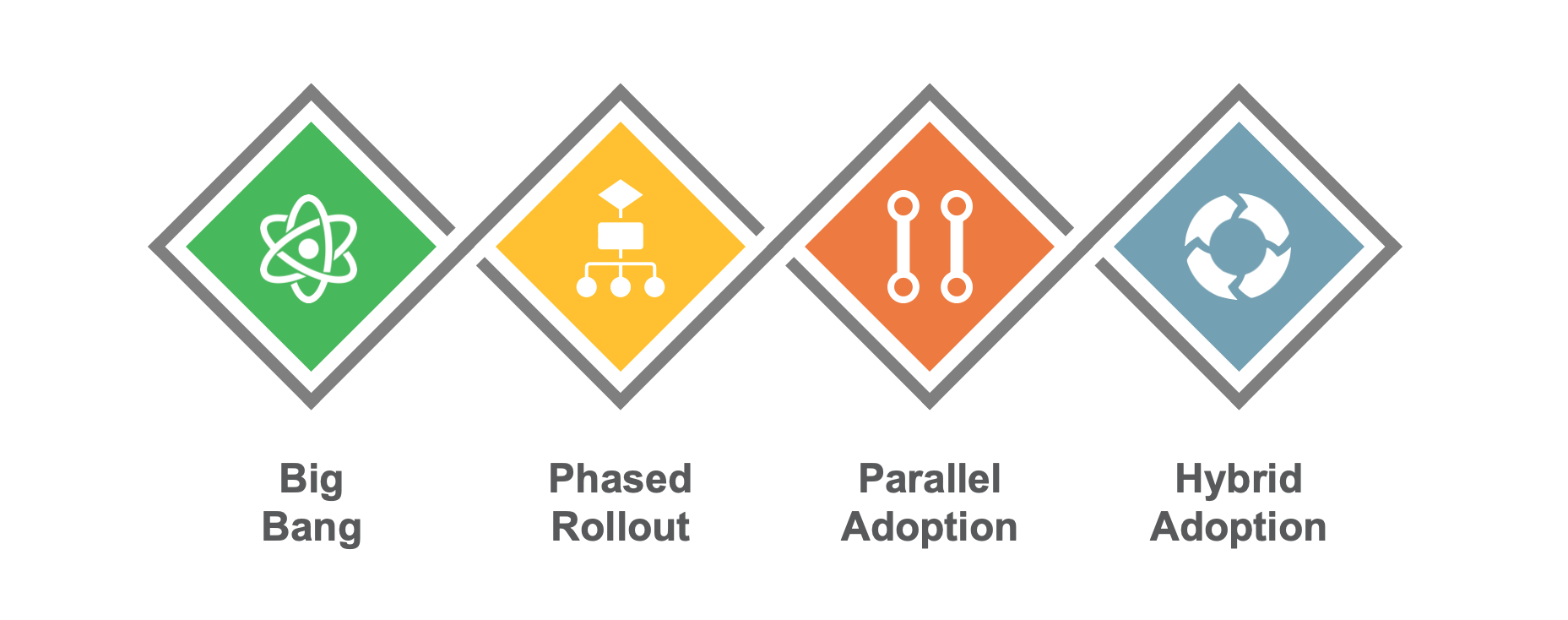Implementing an ERP system — which involves planning, configuring, customizing, and deploying a new solution — impacts every aspect of the business, including finance, HR, sales, and manufacturing. To ensure that implementation goes well, key stakeholders need to be consulted before and during the implementation, so the entire business is ready for the change. While there is no single method to identify the right implementation strategy for any organization or enterprise, there are several factors that affect the strategy and timeline for an ERP implementation. They include:
- Company size
- Number of locations
- Business process complexities
- Number of integrations with third-party applications
- Employee headcount
- Type of industry and operation structure
- Nature of customizations
- Migration of master data and transactional data
- Change management
Depending on the selected implementation approach and the complexity of business processes, ERP implementations can take anywhere from four months to two years or more. Regardless of the timeline, choosing the right ERP partners, establishing a well-documented project plan, and properly allocating resources will determine how effective the ERP implementation is.
There are three important pillars in every ERP implementation: people, process, and technology. Most ERP implementation failures result from inadequate planning and resource management, coupled with a lack of awareness regarding risks. This failure can happen at multiple levels, affecting critical business processes that can overwhelm a technical team’s ability to manage risks and change effectively. Understanding the relationships between the people, processes, and technology involved will help determine which type of ERP implementation strategy is best suited for each project or company.
Implementation Strategies – Key to successful ERP implementations
While there are a few proven strategies for transitioning to new ERP systems, each with advantages and disadvantages, successful implementations always depend on the stakeholders working together with a shared goal and vision of business success.
These are the four most common Implementation strategies:

Big Bang approach:
The term “big-bang ERP implementation” describes a go-live scenario where a business switches from its existing legacy system to a new solution at a single point in time. The big bang approach has the potential to reduce the integration cost. In this approach, everything moves to a new system at the same time. All integration work — including any related to data management, training, and establishing processes and configurations — should be completed by the go-live date. Businesses in some industries may be reluctant to use the big bang approach because it requires too many resources to support the go-live.
Pros and cons of the big bang approach
| Pros | Cons |
|
|
Phased roll-out approach:
In a phased roll-out, the modules of the ERP system are introduced in a planned sequence, replacing the old system gradually. For example, a company operating in different geographic locations might roll out of the new ERP solution one location at a time. This approach has a minimal impact on the overall organization or enterprise, and one of the greatest benefits of a phased rollout is that it gives users more time to learn and adapt to the new system. In this way, older systems can be replaced gradually rather than all at once. Milestones can be set for each phased rollout based on factors such as:
- Modules and complexities
- Business units
- Geographic locations
Pros and cons of a phased roll-out approach:
| Pros | Cons |
|
|
Parallel adoption approach:
The parallel approach to an ERP implementation is to keep the legacy system and the new system running concurrently for a while. The amount of time for which both the systems are in operation could range from one day to several months. One advantage of parallel adoption is that it provides a safety net in case something goes wrong. The enterprise business process will not be disrupted if the new ERP system breaks down. This approach also provides number-to-number comparisons to confirm that the new ERP system is performing the necessary business process flows. This strategy is best suited for mission-critical situations that cannot survive a major breakdown of an ERP system.
Pros and cons of the parallel roll-out approach:
| Pros | Cons |
|
|
Hybrid Adoption Approach:
The hybrid implementation strategy incorporates elements of the parallel, big bang, and phased approaches. Hybrid strategies vary depending on the nature and size of the enterprise. Small to medium-sized organizations with very few sites tend to have simple hybrid strategies whereas large conglomerates may require more complex hybrid implementation strategies for a successful ERP implementation.
Pros & Cons of Hybrid Roll-out approach:
| Pros | Cons |
|
|
Inspirage can help
An ERP implementation can be a long journey, so selecting the right strategy is crucial. Once all business processes are aligned, the dramatic positive impact on ROI (return on investment) will be obvious to everyone. Working with a partner to establish industry best practices during the process creates a more seamless and speedier experience. Inspirage can guide your journey down the right path and reduce implementation costs by delivering a well-defined ERP implementation strategy and communication process.
As the Integrated Supply Chain Specialists, with recognition from Gartner, IDC, and winners of Oracle’s 2021 Game Changer Award for SCM Service Delivery Partner of the Year, Inspirage is uniquely qualified to be your success partner. Whether you are upgrading your on-prem system or have decided to move to the cloud where continuous improvement is built-in, our team is prepared to guide you on your transformational journey.
